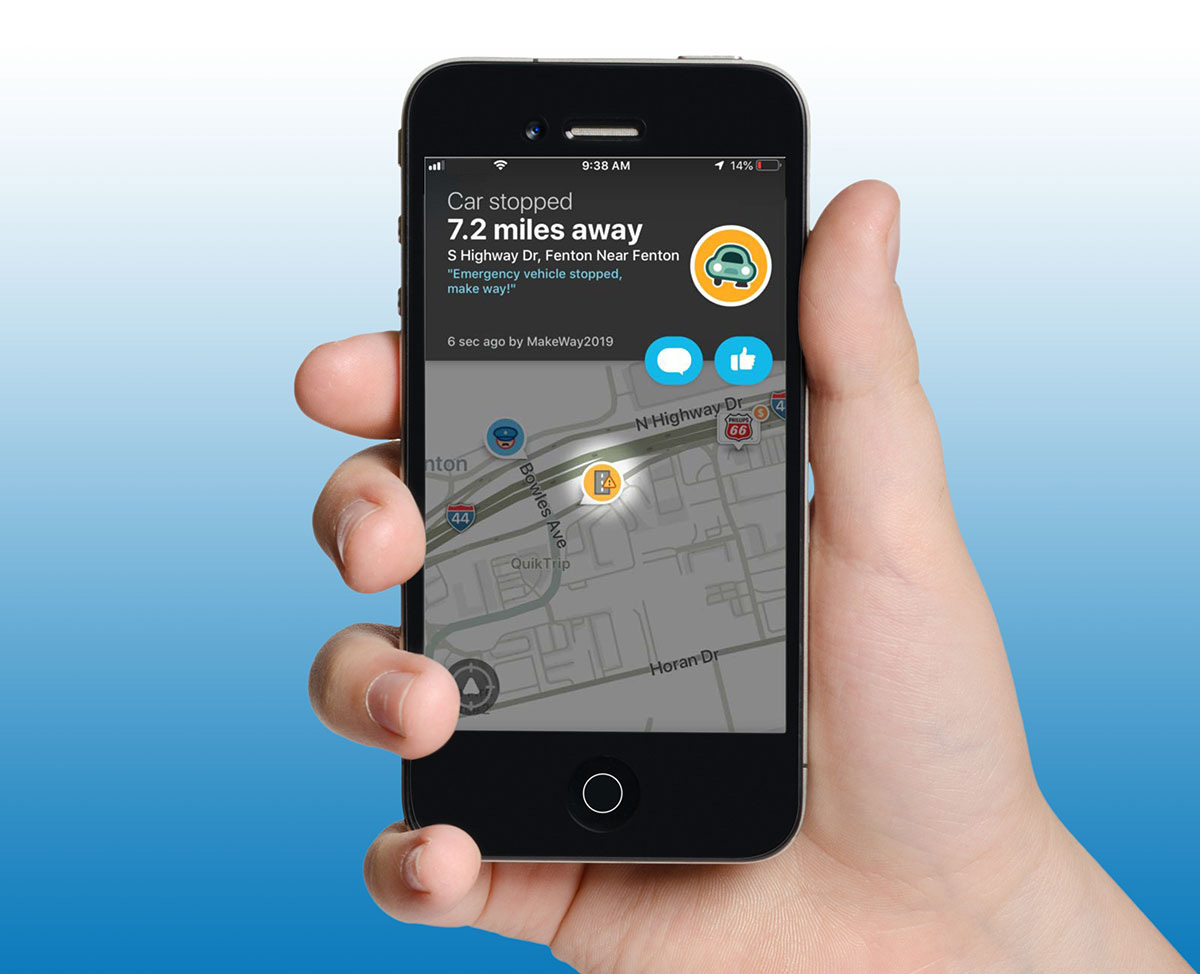February 13, 2020
Innovation of the Month:
Crowdsourcing for Operations
Last week, we introduced you to Crowdsourcing for Operations and a few of its use cases, including using third-party data gathered from apps such as Waze™ to update traveler information, assist with traffic incident management, and help set road maintenance priorities.
The Missouri Department of Transportation (MoDOT) is piloting crowdsourcing technologies that alert the driving public of active field crews, keeping both responders and travelers safe. When emergency response trucks, motorist assistance, and maintenance fleet lights activate, a notification pops up on the Waze™ app within approximately 30 seconds for users within the active vehicle's vicinity.

The Kansas City and St. Louis districts have installed equipment in their vehicle fleet to use two different GPS and cloud-based solutions. In the pilot phase, stopped service patrol trucks have successfully created warnings for thousands of approaching motorists. One such truck has alerted over 9,700 motorists while working almost 1,000 traffic incidents.
The systems also offer data like speed history, duration of flashing lights, time for on-scene arrival and departure, which is valuable to MoDOT for internal performance metrics.
In addition to keeping responders and the traveling public safer, MoDOT is working to improve customer service through responsive roadway maintenance. They are piloting the sharing of Waze™ pothole reports with maintenance supervisors daily at 5 AM to help prioritize response efforts. MoDOT Districts are also using Waze™ and other crowdsourced data to support incident detection and provide timely traveler information.
If you would like to learn more about how your agency can use crowdsourced data for applications such as these, contact James Colyar or Paul Jodoin of the Federal Highway Administration Office of Operations.
Kentucky Transportation Cabinet Addresses Over 1,000 Critical Structures with "Bridging Kentucky" Program
The Kentucky Transportation Cabinet (KYTC) is using project bundling to address more than 1,000 "poor condition bridges" over a six-year period. KYTC will bundle projects consisting of approximately 2-20 bridges to save project delivery cost and time, and assist local economies and provide opportunities for smaller contractors. KYTC is also using various contracting approaches, including traditional bid-build and design-build. The State will continuously evaluate results as the program progresses to determine effectiveness and savings achieved from individual projects.
KYTC has also used bundling for projects other than bridges, including pavement preservation/resurfacing and highway safety improvements. One district office is even considering bundling other similar work types, including access management, and pavement rehabilitation.
To learn more about project bundling, contact Romeo Garcia of the FHWA Office of Infrastructure or David Unkefer of the FHWA Resource Center.
Funding Improvements with Increased Property Values
Did you know you can use a portion of property tax increases resulting from infrastructure improvements to help pay for them? Municipalities are using tax increment financing (TIF) to fund public or private transportation projects by capturing some of the increase in these revenues. TIFs can enhance property values and encourage new development and private-sector investment.
In South Dakota, a new mill and grain loadout facility near Presho required road and bridge repairs to meet the demands of increased traffic and freight. Maintaining access to the facility is critical to lowering the cost of transporting grain, enabling farmers in the area to more efficiently market and ship their product. The transportation improvements will enhance the value of the business and property and contribute to a competitive and vibrant farm economy.
Among other funding sources, the county approved a TIF district for the surrounding area. The TIF funding is crucial to the success of the project, which the county plans to start in spring 2020 to accommodate the grain facility's busiest season.
To find out how TIF districts and other value capture methods can help your agency fund future transportation projects, contact Stefan Natzke, FHWA Office of Planning, Environment, and Realty, or Thay Bishop, FHWA Center for Innovative Finance Support.
About EDC
Every Day Counts, a State-based program of the Federal Highway Administration’s Center for Accelerating Innovation, works with State, local, and private sector partners to encourage the adoption of proven technologies and innovations to shorten and enhance project delivery.


